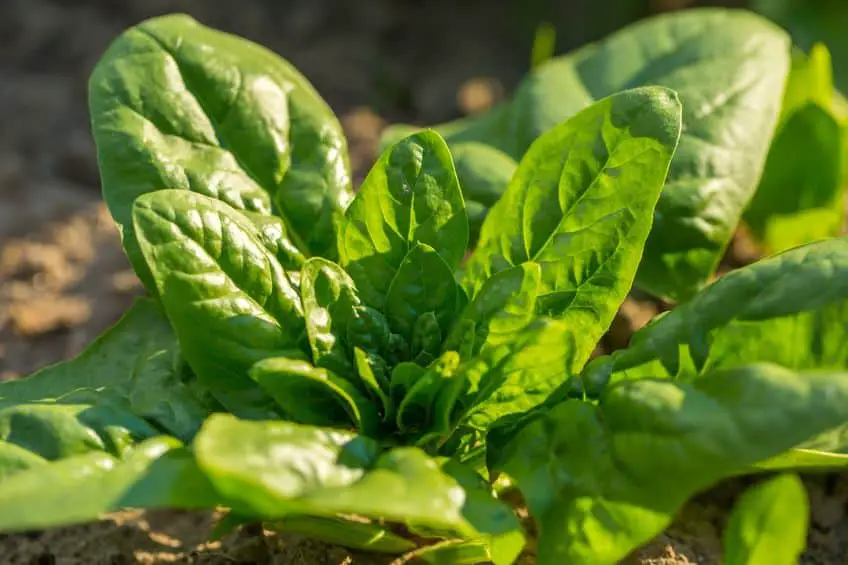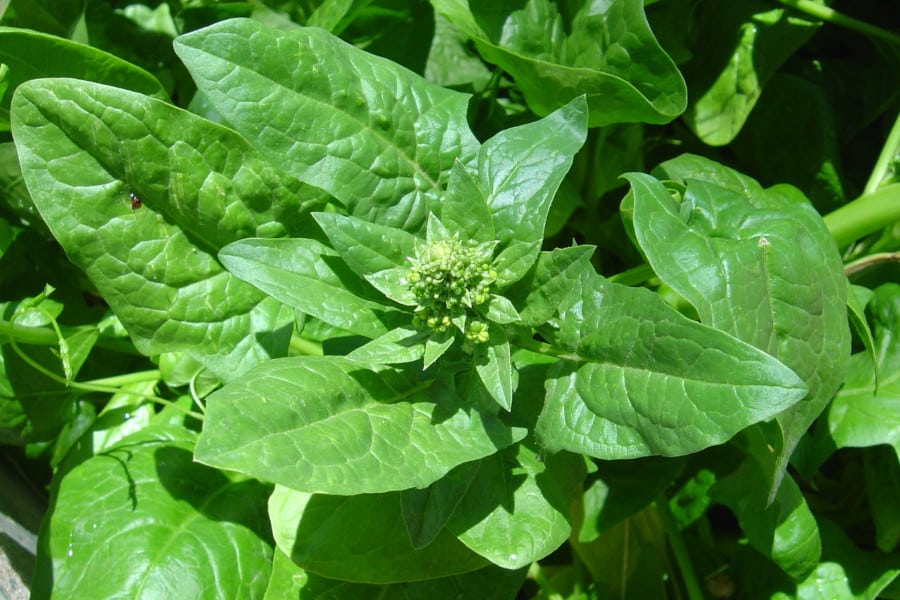Spinach is an excellent plant to grow both in the garden and indoors. In most places, spinach can be grown from early spring to late fall since it does not require as much sunlight as many other plants. But just how much sunlight does spinach need?
As a general rule, spinach needs at least 4 hours of sunlight per day to thrive, although 6-10 is ideal. If spinach receives more than 14 hours of sunlight in a day, however, it will start bolting. These numbers are a good rule of thumb but may vary slightly since different spinach varieties require different conditions.
Read on to learn just how much sunlight your spinach should get to provide you with the best harvest. I also talk about how much sunlight it takes for spinach to start producing seeds and what you should do in that case.

How Much Sunlight Does Spinach Need?
Spinach is an excellent plant to grow for gardeners at every level. It is easy to grow and can grow in both direct sunlight and partial shade so it works regardless if you are growing it in your garden, on a balcony, or indoors in a pot or container.
No matter if you grow your spinach indoors or outside, it is important to give it enough (but not too much) sunlight. But just what is “enough” and “too much” in this case? Let’s see.
There are several spinach varieties, each with different attributes and requirements for growing conditions so how much sunlight your specific spinach needs depends on the variety, however, a good rule of thumb when it comes to spinach is to give it at least 4 hours of sunlight per day.
Depending on what you want to do with the spinach, there are some things you should know.
If you are planning on growing spinach to eat it, 4 hours of sunlight per day is sufficient although more can also be beneficial. If you want to harvest seeds from your spinach, it should get at least 14 hours of sunlight per day to begin bolting.
Just like sunlight, there are also some important requirements when it comes to temperatures and while spinach is a quite strong plant, the temperatures can get both too low and too high.
What is the ideal temperature to grow spinach? The ideal temperature to grow spinach is between 50-70°F (10-21°C) but it can survive as long as the temperature is above 32°F (0°C). If the temperatures exceed 75°F (24°C), spinach will start bolting which is when it flowers and produces seeds.
Sunlight and temperature are perhaps the most important conditions for spinach to grow well but there are more conditions to know about such as the soil, watering, and fertilizing.
Here is a table I made that summarizes the best growing conditions for spinach:
| Temperature | 50-70°F (10-21°C) |
| Grow in | Sun or partial shade |
| Hours of sun | 4-14 hours (6-10 is ideal) |
| Soil | Slightly acidic. pH 6.5-6.8 |
| Watering | Small doses. Often |
| Fertilizing | A light dose of fertilizer every 2-3 weeks |
| Ground or container | Both |
I like to grow spinach from as early as possible in the growing season until as late as possible. Where I live, this is usually from early spring (March or early April) until sometime in the fall (usually October but sometimes November).
As long as the temperatures are within the range I mentioned above and your spinach gets enough sunlight, you will be just fine.
In my experience, it is much easier to grow spinach in the spring and fall since the temperatures and hours of sunlight are often perfect for spinach to keep growing and producing without bolting.
I especially like to grow spinach in the fall since the days are not getting longer like in the spring, so the spinach can just keep growing and producing as long as it gets a minimum of 4 hours of sunlight and it doesn’t get too cold.
In the warmest summer months, the temperatures and hours of sunlight can be too much for spinach and it will often begin to bolt pretty fast.
If you grow spinach in the summer and it starts bolting early, you can make good use of it and harvest seeds that you can use in the fall or the next growing season.
What Happens if Spinach Gets Too Much Sunlight?

When spinach gets too much sunlight or the temperatures get too high, it will begin to bolt. But what exactly is bolting and what does it look like?
As a general rule, spinach will begin bolting when it receives sunlight for more than 14 hours per day or when the temperature exceeds 75°F (24°C). When spinach is bolting, the structure of the plant changes and it will begin to produce flowers and seeds.
Bolting is also often referred to as going to seed. It essentially means that the spinach is nearing the end of its life cycle and is beginning to produce flowers and seeds.
Luckily, it is pretty easy to see when your spinach is about to bolt since the whole structure of the plant will change.
Here are some early signs that your spinach is about to start bolting:
- A long, thin stalk begins to grow from the center of the plant.
- Flowers start to form and grow at the end of the middle stalk.
- The leaves begin to change shape from round or oval to a more pointy, arrow-like shape.
- The leaves begin to taste bitter.
- The plant slowly begins to dry out and turn brown.
The image above is of spinach that has started bolting. As you can see, flowers are beginning to form in the center of the plant and the leaves are changing shape and becoming more pointy.
When your spinach is bolting, you pretty much have two options. To let it bolt, or delay it. If you want to keep the plant in the production stage, you should remove the flowers as soon as possible. If you want to collect seeds, you should let it flower. You can read much more about that here.

